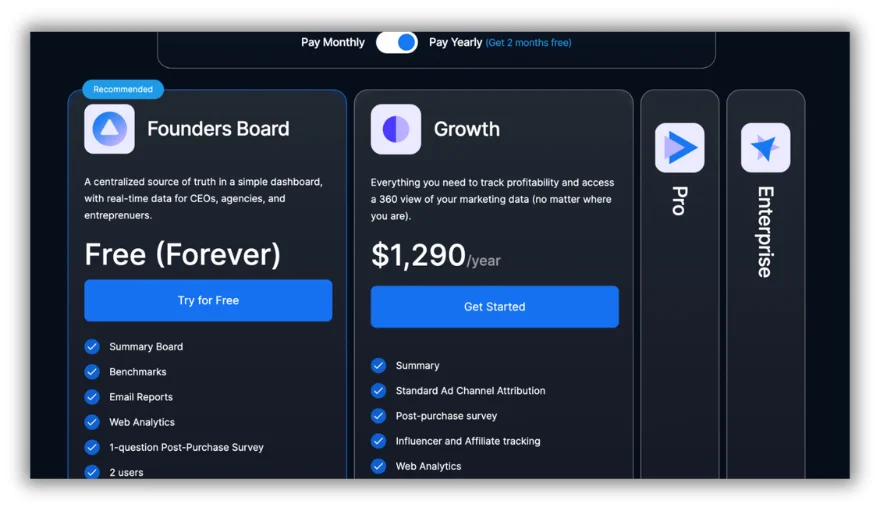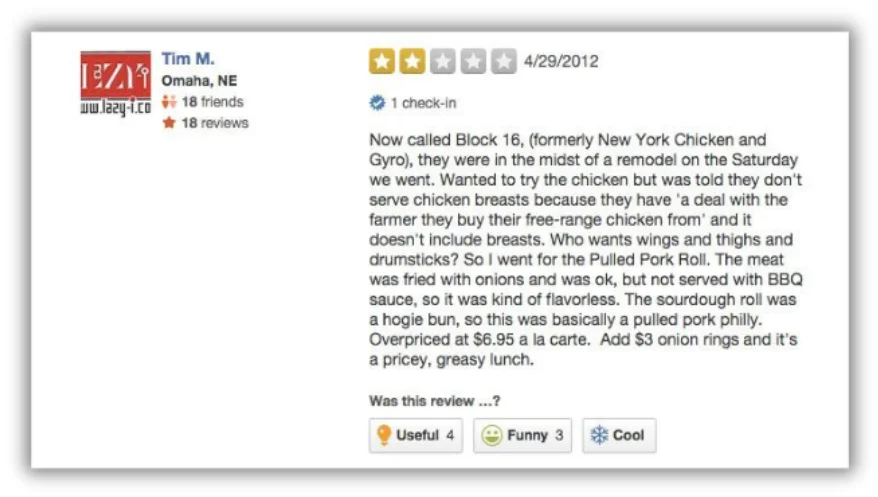Staying one step ahead of the competition is critical. It’s no longer enough to focus on one’s own business, product offerings, customer service, operations, and the like. Business owners need to be actively engaged in collecting insights and data points about the state of their competition. Heck, how are you supposed to know how to win if you don’t know who is running the race and how they’re running it?
In fact, the discipline of collecting competitive insights isn’t simply about gauging the business landscape in your particular vertical. It’s about actively improving your business. Why? Because whether you like it or not, your competitors are, in all likelihood, succeeding in some way that you’re not. They’re failing in some way you’re not. And when you truly start to analyze these successes and failures, you’re in for a veritable goldmine of ideas about how to improve your own operations.
In this post, we’re going to run through seven of the most actionable insights you can collect on your competitors. We’ll show you where to find them, and what they mean. And most importantly, we’ll show you what to do with this data to make more revenue in the form of greater market share this year.
Top competitive insights to collect
There are a ton of ways to go about collecting (and analyzing) competitive insights, and that’s exactly what we’re here to talk about today. Here are the top competitive insights we’re going to cover:
- Product suite, features, positioning, and pricing
- Review and credibility analysis
- Authority and top-level SEO analysis
- Content gap, top keywords, and top pages
- Backlink analysis
- Paid keyword strategy
- Paid social creative strategy
Let’s dive in.
1. Product suite, features, positioning, and pricing
Products, features, positioning, and pricing are probably the most important competitive insights you can collect. Why? Because if your products and services aren’t positioned or priced correctly, no amount of marketing or competitive research is going to allow you to beat your competitors.
For pricing, try using a competitive pricing tool like PriceLabs or Repricer. Or try pricing your products or services how they are actually valued. Look at your competitors’ websites. How are they packaging their offerings? What prices are they using? How is your product meaningfully better than theirs? How is it worse? Do you use better materials? Do you have better customer service? How are they positioning their offering as better or different than the other offerings on the market?


With regard to price, you may be tempted to undercut your competitors to win more business. But consider what having a lower price says about your product. In fact, consumers will often choose the higher price because they believe a higher price equates to a higher value. And for consumers looking for a lower price, an honest conversation with your sales team about why you are priced higher than your competitors (because your product is better!) is often enough to win the sale.
A good ole’ SWOT analysis can help you keep track of these competitive insights. Try out one of these SWOT analysis templates or check out these SWOT analysis examples to get started.
? Want to know how much your competitors might be paying for Google Ads? Download our Search Advertising Benchmarks to find out!
2. Review and credibility analysis
You can use a competitive analysis tool to analyze reviews en masse, but if you’re cash-strapped, you’ll be happy to hear that this step is completely free. Just head to your competitors’ pages on Yelp, Google Business, Amazon, Trustpilot, and the like. Anywhere your competitors’ customers have gone to tell the world exactly how they feel about them.


We used a restaurant example here, but whether you’re a software company, a roofing company, or an ecommerce brand, reviews are where you go to understand where your competitors are falling short of their customers’ expectations, where they are meeting them, and where they are exceeding them.
Do they take too long to respond to a support chat? That’s an area where you can beat them. Is there a particular feature one customer wishes they had? That’s an area where you can beat them. Are customers responding positively to your competitors’ pricing? Well, you may want to consider lowering your prices a touch to compete for that business.
?? Want more reviews for your business? We’ve got you covered! Free download >> The Complete Email Marketing Toolkit
3. Authority and top-level SEO analysis
Page and domain authority are a huge factor in your competitor’s ability to outrank you in the search results. Authority is measured on a scale of 0-100, and is essentially the fruit of your greatest ally in off-page SEO (Search Engine Optimization): backlinking.
Does your competitor have a lot of links from other websites? Are they quality links from reputable sites with strong content? These are the questions you need to ask yourself, and you’ll find the answers in tools like Semrush, Ahrefs, and Moz: any tool that measures authority and can show you your competitors’ backlink profiles.
To find this competitive insight, try typing the name of your domain into Ahrefs, and click on the “Organic Competitors” tab. Note: you will need a paid version of this tool or a free trial to see this competitive insight.


As you can see, Ahrefs gives us a nice scatter plot of how we compare to our competitors in terms of organic traffic, number of pages in the search results, domain rating (or authority), number of organic keywords, and more.


4. Content gap, top keywords, and top pages
Since we’re talking about SEO, we might as well follow this thread to our content gap analysis. This competitive insight shows you which pages or keywords are generating the most organic traffic for your competitors that you do not rank for. This is yet another tab within tools like Ahrefs, Semrush, and Moz, and it looks like this:


There are a number of ways to slice and dice this report. You can see which keywords your competitors rank for on page one that you rank for on page two. You can see which keywords you don’t rank for at all that you should rank for. You can sort by traffic. You can also simply pull a list of your competitors’ top organic keywords by traffic.


Creating a content plan and not sure where to start? Head to the “Top Pages” tab, search for “blog” in the URL, and see where the lion’s share of your competitors’ organic blog traffic is coming from.
However you choose to do it, these reports will start to give you a great idea of what type of content you need to create, and what types of keywords you need to target, in order to enjoy the same organic success as your competitors.
? Need help finding the right keywords? Try our Free Keyword Tool!
5. Backlink analysis
Once we have a high-level hold on how we compare to our competitors organically, we can start digging a bit deeper. It looks like the competitor at the top of the list, the one with whom we share the most common keywords, is crushing us in organic traffic. How have they accrued the domain authority to outrank us on so many critical keywords?
Let’s take a look at their backlinks. We can do this by clicking on the “Backlinks” tab after searching their domain.


We can see here that the first two websites linking to our competitor have really strong authority (92). If we scroll down the list, not only do we start getting a sense of what kind of links we need to accrue in order to compete, but we can start to mark down some great targets for link outreach.
6. Paid keyword strategy
We’ve discussed how to use your competitors’ organic keywords to buoy your business; now, let’s look at a paid keyword report. Once again, you can find this report in a tool like Semrush.


You can see that once we enter a competitor’s domain, we can see who they are competing with, how much paid search traffic they are getting, where their ads are positioned, and most importantly, their top paid keywords. Hop over into the Ad Copies tab, and you can see what messaging they’re using for each of these top keywords:


If you’re running Google Ads on the search network, this is invaluable insight. Understanding where your competitors are getting business from on the search network, and how they’re doing so, can tip you off on what types of keywords you should be bidding on, what your ad copy might look like, and how many clicks and leads you can expect to get from those ads.
? Worried you’re falling behind your competitors in Google Ads? Find out with a free, instant audit >> Google Ads Performance Grader
7. Paid social creative strategy
If you’re running any kind of visual advertising–be it Facebook, Instagram, Display, or Out-of-Home–you’re going to want to get familiar with the Meta Ads Library.
With this library, you can search for any of your competitors’ brands and see exactly what kind of creative they are running:


This an awesome sneak peek into your competitor’s paid social strategy. Here you’ll find what types of messaging your competitors use to promote their products, what call-to-actions they use, promotions, ad types, landing pages, and more. You can use this information to do any number of things: inspire your own campaigns, go after a different segment of the market, innovate your products, develop new creative strategies, and more.
Get better competitive insights, build a bigger business
When it comes to competitive insights, the point of diminishing returns comes when you’re focusing more on your competitors than on yourself. But so few business owners are able to think beyond the scope of their own day-to-day operations. The truth is, even small investments in competitive research and analysis can go a long way.
Focus on these seven competitive insights, and you’ll be well on your way to winning business over your competitors.